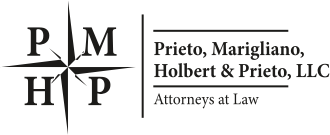Did you know that one in 10 Americans aged 60 and older has experienced some form of elder abuse? This is a staggering and disturbing number, but it’s an important statistic to know in order to face this particular issue accordingly.
With elder abuse being so commonplace, it’s valuable to know how to prevent it and how to effectively spread awareness about it. We’ll discuss what the abuse factors are, what to look for, and when to get an attorney involved.
What is Elder Abuse?
Elder abuse is defined as “the infliction of physical, emotional, or financial harm on an older adult by someone in a position of trust or responsibility.” This can include physical and sexual assault, neglect, financial exploitation, abandonment, and intimidation.
Why is it Important to Spread Awareness About Elder Abuse?
It’s necessary to spread awareness about abuse of the elderly for several reasons. First of all, this is an under-reported crime. Oftentimes the victims feel shame, embarrassment, and fear about reporting their abuser.
This specific type of abuse can also be difficult to recognize due to its complexity and subtlety in some cases. Therefore, it’s essential to know the signs so we can help the victims get out of danger, and so we can help prevent this kind of abuse from happening in the future.
4 Factors of Elder Abuse
As we mentioned, there are four factors that we need to be aware of and look out for. These factors include:
- Individual Risk Factors
- Relationship Risk Factors
- Societal Risk Factors
- Protective Risk Factors
1. Individual Risk Factors
Individual risk factors refer to the characteristics of the victims such as age, physical or mental disabilities or illnesses, and other social or economic issues.
2. Relationship Risk Factors
Relationship risk factors refer to the relationship between the abuser and the victim. This could include a dependent relationship, lack of family support, mental health issues in either party, substance abuse by either party, or prior history of violence between them.
3. Societal Risk Factors
Societal risk factors are environmental factors that can contribute to the abuse of the elderly such as community isolation, poverty, and lack of access to services.
4. Protective Risk Factors
Protective risk factors are those that serve as a buffer against the abuse of elders including financial independence, family involvement, and support from friends or neighbors.
What to Look out for
Everyone should learn to be aware of the signs of abuse for this demographic so we can help protect the elderly from any type of harm. Here is a list of signs to be on the lookout for:
- Physical injuries
- Emotional changes
- Financial irregularities and unexplained withdrawals
- Sudden changes in living arrangements such as a move to a nursing home
- Sudden changes in legal documents
If you’re concerned that a loved one is being abused, reach out to the proper authorities and seek legal advice from an attorney who is familiar with these types of claims. The safety of our elderly populations should always be a priority, and by understanding the factors of elder abuse, we can help ensure their safety.
Should You Get an Attorney Involved?
If you’re concerned that an elder in your life is being abused, it may be time to seek legal counsel. An attorney can help you navigate through the laws that protect elders, and they can provide guidance on how to proceed with a case of elder abuse.
Prieto, Marigliano, Holbert, & Prieto, LLC (PMHP Law) has been providing professional legal counsel for people throughout Georgia in various areas of the law for over 25 years. Our attorneys will provide the care your case needs to be successful, along with personal attention during the process.
No one should have to experience abuse of any kind. Let’s do our part to spread awareness about this issue and take proactive steps to protect those who are vulnerable. Contact us today to ensure your loved ones are safe, taken care of, and see if legal action needs to be taken. We are here to be the voice for families of victims.
